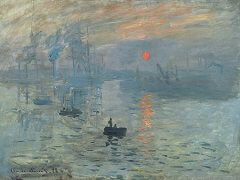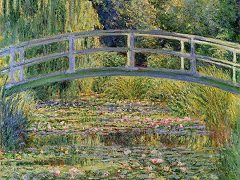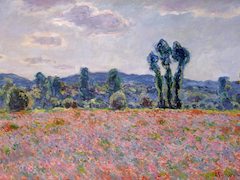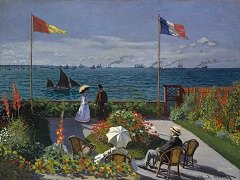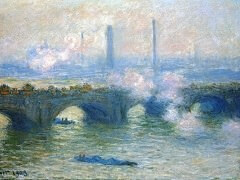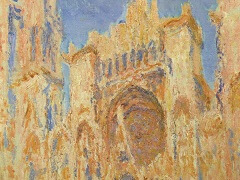The Saint-Lazare Station, 1877 by Claude Monet
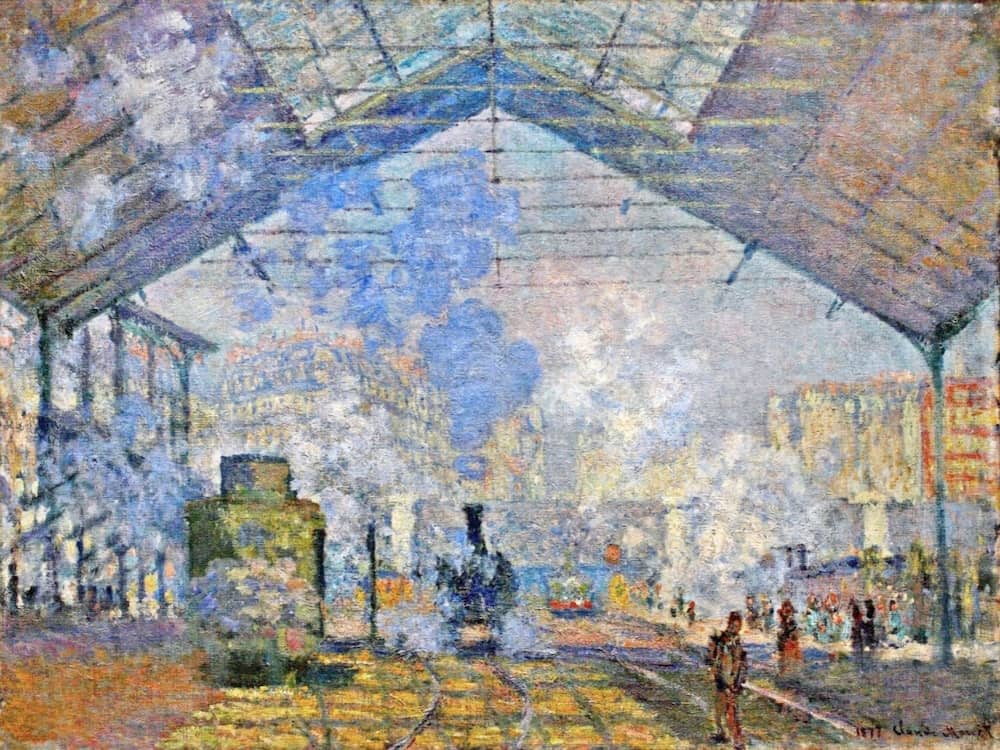
Railways were an incredibly important motif for the Impressionist movement. Here, Monet depicts a piece dominated by smoke, steam, iron, and glass. This particular scene would have been familiar to all the passengers traveling toward the Pont de L'Europe, which can be seen in the background. In the work, a carriage is contained on the left in shadow, while to the right, in the sunlight, are the waiting passengers on the platform. The painting is framed by the roof of the station, which comes to a point in the middle of the top of the canvas, while the smoke from the steam engine below funnels toward its center. Monet returned to the subject in later works and used his works as a commentary on modern society.
In early 1877 Monet started work on a series of paintings of The Saint-Lazare Station, turning again to the subject of modern life. Monet was fascinated by the steam engines; the people in his series of paintings recede into incidentals against the bigger might of the train. Monet's The Saint-Lazare Station series shows him evolving his treatment of steam and its effects on the atmosphere. His engines dominate the paintings, their solidity in direct contrast to the vapor of their steam. The paintings were included in the third Impressionist Exhibition of April 1877 but again were widely criticized.

